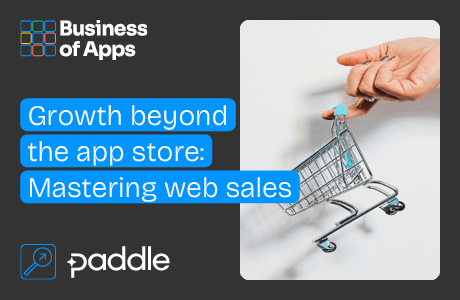The mobile app space in the US just fundamentally changed. On April 30, 2025, US District Judge Yvonne Gonzalez Rogers ruled that Apple violated her 2021 injunction by continuing to restrict how developers inform users about alternative payment options.
Outlined in the 80-page decision, the judge found that Apple “willfully” violated the court order “with the express intent to create new anticompetitive barriers” to maintain its revenue stream.
It’s the latest turn in the Epic Games v Apple legal saga, which stretches back to 2021, when a Bay Area court ruled that Apple was blocking apps from informing users about alternative payment methods, therefore violating California’s Unfair Competition Law.
Let’s get into what this change actually means in practice for app developers.
This post was first published on paddle.com.
Apple’s updated guidelines (in the US)
As of May 1st 2025, Apple has officially updated the App Store Guidelines to comply with the court’s ruling. According to an email sent to developers on May 1, 2025, the key changes include:
- Apps in the US can now include buttons, external links, or other calls to action for web payments.
- No fee entitlement is required for these external links.
- Apple must remove all UX friction and allow unfettered access to external payment links.
- Developers are now free to communicate with users about outside payment options.
These changes represent a complete reversal of Apple’s previous stance and open up significant opportunities for app developers and their teams.
The opportunity
A quick glance at the core advantages this ruling brings to the US mobile app market:
Keep more revenue
With Apple’s commission removed on external purchases, you can retain extra revenue and pay fees as low as 3-6% – certainly much less than what you’re paying today.
Enhanced cash flow
Although not all web payouts are born equal, developers are no longer at the mercy of Apple’s lengthy up to 60-day payout window. With more control of your cash flow, these funds can then be put to use acquiring more users.
Pricing flexibility
You’re no longer bound by Apple’s pricing tiers or restrictions. This means you can create time-limited sales, coupon codes, special bundles, and localized pricing strategies that were previously impossible.
Direct customer relationships
Collect emails, demographic data, and communicate directly with your customers instead of having Apple mediate all interactions, enabling personalized engagement and powerful retention campaigns.
Churn prevention
Implement cancellation flows that can offer alternatives when users try to cancel, like pausing subscriptions or special retention offers – Paddle’s Retain product automatically uses data points to win back customers before they’re gone for good.
Expanded audience
Reach customer segments that traditional app marketing doesn’t capture, particularly older demographics who often show better retention rates when purchasing through web channels.










